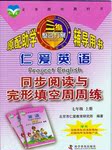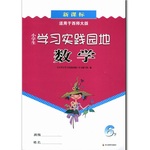题目内容
【题目】假定英语课上老师要求同桌之间交换修改作文,请你修改你同桌写的以下作文。文中共有10处语言错误,每句中最多有两处。每处错误仅涉及一个单词的增加、删除或修改。
增加:在缺词处加一个漏字符号(∧),并在其下面写出该加的词。
删除:把多余的词用斜线(\)划掉。
修改:在错的词下划一横线,并在该词下面写出修改后的词。
注意:
1.每处错误及其修改均仅限一词;
2.只允许修改10处,多者(从第11处起)不计分。
When Mom was 61, she showed signs on the lung cancer. We knew something was wrong and that Mom needs a journey. She suggested a movie and a dinner. But I had another plan Though Mom had been to the ocean only twice, but she loved the seashore. Her kitchen was decorating with souvenirs(纪念品) from those two trips. I told Mom that we would leave for Jersey Shore. Mom was very excited that she screamed. Once we got Jersey Shore, she began to enjoy the trip, greeting strangers and spending hours collected shells. The morning we left, I found her taking photos of every inch of her bedroom. Short after we returned, Mom passed away. For a long time, Mom s shells stayed in a box. I found it again while searching for something else. I put them in a familiar place as a reminder(提醒物) from a mother which never lost her sense of wonder.
【答案】
【解析】
这是一篇记叙文。作者回忆母亲生前去海边旅游时经历的事情,作者把母亲捡回来的贝壳放在自己熟悉的地方以纪念妈妈。
1.考查介词。此处表示癌症的迹象,应使用介词of表示所属关系。故将on改为of。
2.考查时态。根据本句中的was可知,need应该使用过去式的形式。故将needs改为needed。
3.考查让步状语从句和并列句。though引导让步状语从句,but连接两个分句构成并列句。因此though和but不能同时出现在这个句子中,即应该去掉其中的一个,因为though后面的单词Mom的第一个字母是大写的,因此去掉Though或者but均可以。故将Though或 but去掉。
4.考查固定短语。be decorated with是固定短语,意为“装饰着”。故将decorating 改为decorated。
5.考查固定结构。so …that…是固定结构,意为“如此……以至于……”。故将very 改为so。
6.考查固定结构。表示“到达某地”应该为“get to+地点”,它是固定短语。故在got后加to。
7.考查固定短语。spend time (in) doing sth是固定短语,意为“花费时间做某事”。故将 collected改为collecting。
8.考查副词。shortly after是固定词组,意为“在某事之后不久”,short应该使用副词形式。故将Short 改为Shortly。
9.考查人称代词。此处代词用于指代上文的复数名词,应该使用them。故将 it改为them。
10.考查定语从句。分析句子结构可知,mother是定语从句的先行词,它在从句中作主语。因此使用关系代词who或that。故将which 改为who/that。

 仁爱英语同步练习册系列答案
仁爱英语同步练习册系列答案 学习实践园地系列答案
学习实践园地系列答案





